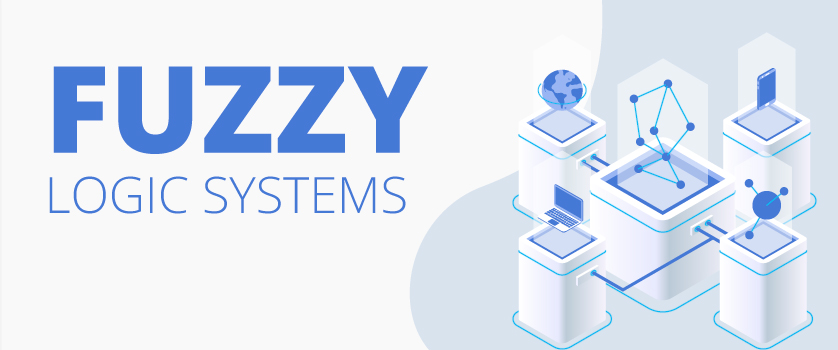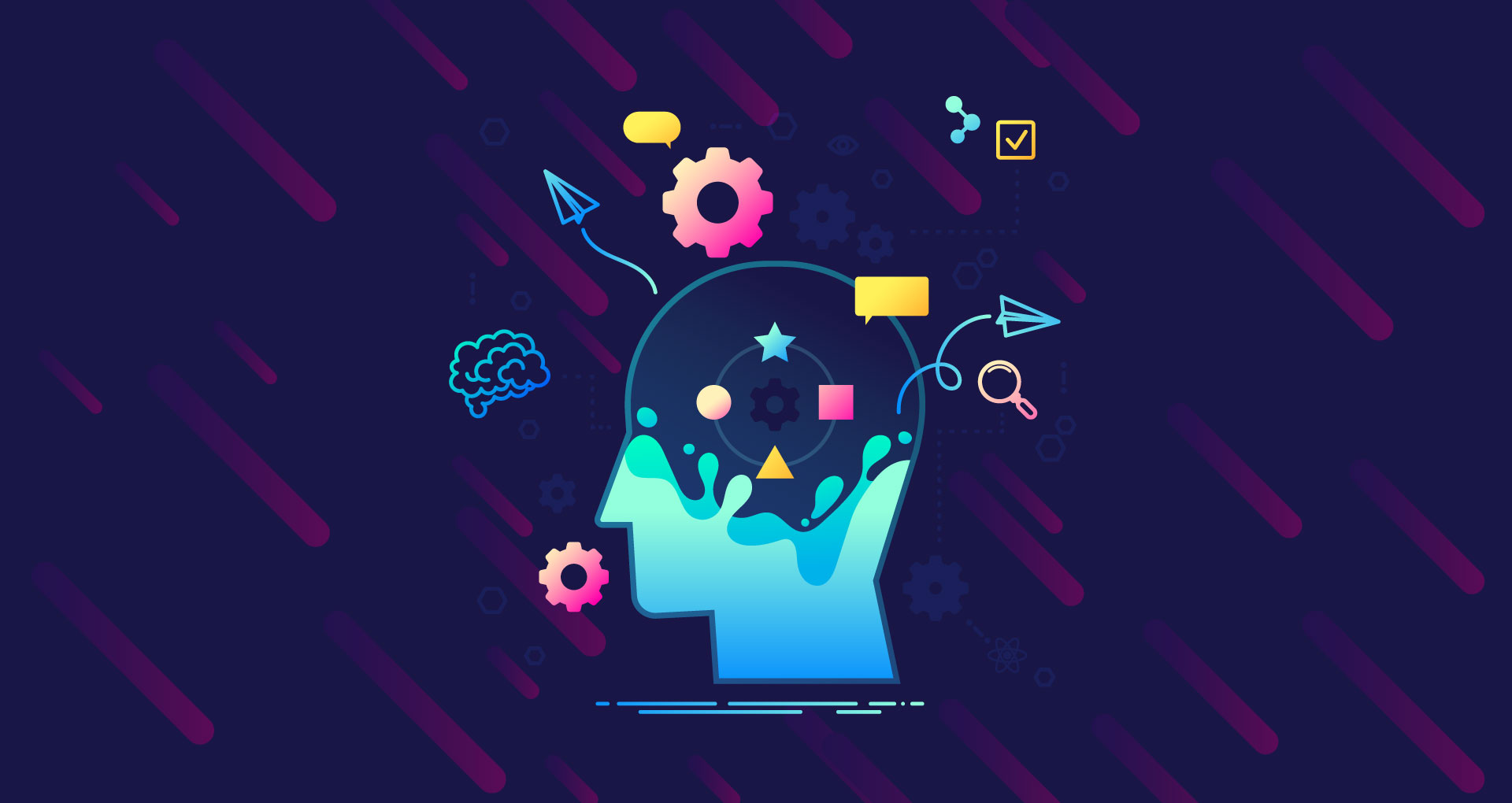
Anshul Jain
03 Mar 2020
Artificial Intelligence (AI) , the tech of tomorrow, has gone through tremendous growth in the past few years. Adopted and implemented across industries, it is rapidly transforming business structures and functions, with development being no exception. Moreover, this tech has given way to new theories, algorithms, logic, techniques, etc. which are reshaping the way systems are built. Among these new innovations, Fuzzy Logic Systems is another crucial technique that is enabling machines to be on par with humans intelligence. Used widely, along with numerous other AI algorithms, Fuzzy Logic Systems is a vital part of various AI applications and makes systems capable of performing human-like reasoning. So, let’s understand ‘What is Fuzzy Logic Systems?’ and discuss its areas of application, architecture, advantages, and more.
But, before we jump into Fuzzy Logic Systems, understanding the concepts of Fuzzy Logic is extremely crucial, as it plays an integral part in Fuzzy Logic Systems.
So, let’s begin.
Introduction to Fuzzy Logic:
One of the important legacies of Artificial Intelligence, Fuzzy Logic was invented by Lotfi Zadeh, the professor of UC Berkeley in California, in 1965. He came up with this theory while he was working on the problem of computer understanding of Natural Languages, which cannot be translated into absolute terms of 0 and 1.
Like traditional and classical logic Fuzzy Logic does not categorize information into binary patterns (0 or 1), like Yes or No, Day or Night, True or False, etc. but instead focuses on categorizing the gray areas in the scenarios. It is a computing approach, based on the Degrees of Truth, that incorporates intermediate values like partial truth. Other important characteristics of Fuzzy Logic are:
- It helps mimic human-like logic.
- Highly suitable for uncertain or approximate reasoning.
- It views inference as a process of propagating elastic constraints.
- Needs to be built with expert's guidance.
- It helps build nonlinear functions of arbitrary complexity.
- It might have two values that represent two possible solutions.
Implementations of Fuzzy Logic:
Fuzzy Logic is an extremely beneficial theory that offers valuable flexibility for reasoning in Artificial Intelligence (AI). Moreover, it is the underlying concept that enables Fuzzy Logic Systems to work as per expectations. Currently, this tech is implemented in the following:
- Systems with varying sizes and capabilities, like micro-controller, large networked or workstation-based systems.
- In hardware, software or a combination of both.
That’s not all, neural networks, data mining, case-based reasoning, business rules, etc. are other few areas that are profiting from a fuzzy system.
What is the Need for Fuzzy Logic?
From offering valuable flexibility for reasoning to being implemented for practical and commercial reasons, Fuzzy Logic is needed across the spectrum to perform a variety of functions, such as:
- Control systems and consumer products.
- Get acceptable reasoning.
- Deal with the uncertainty in engineering.
What is Fuzzy Logic Systems?
An efficient method for performing human-like reasoning, the Fuzzy Logic System relies on Fuzzy Logic to perform reasoning, in conditions with uncertainty and displays complex and uncertain systems. It uses the Theory of Fuzzy sets to map crisp inputs into crisp outputs. The Fuzzy Set Theory performs a gradual assessment of the degree of membership in a set, describing it with the help of the membership function value in the real unit interval (0, 1) the Boolean logic on which the modern computer is based.
Used widely across numerous industries for system identification, pattern recognition problems, etc., Fuzzy Logic Systems require a little amount of data to prepare a robust model. Moreover, it needs only a limited amount of memory to complete execution.
Example of a Fuzzy Logic System:
Let us consider a Fuzzy Logic System example of an air conditioning system. In such a case, the fuzzy system controls the temperature, based on the input parameters, like very cold, cold, warm, very warm, or hot.
The process of development will take place in 5 steps, which are:
1. Defining linguistics variables and terms for room temperature, cold, hot, warm, etc.
2. Construct membership functions of temperature variables.
3. Prepare knowledge base rule, which includes a matrix of the room temperature and the required room temperature.
4. Obtain the fuzzy rule with the help of fuzzy set operations.
5. 5.Finally, based on the membership functions, perform defuzzification to get the output variable or the expected temperature.
Fuzzy Logic Systems Architecture:
Fuzzy Logic Systems are capable of performing their functions accurately because of its architecture. There are four types of fuzzy logic systems, namely:
1. Fuzzification Module: Also known as Fuzzifiers, fuzzification converts inputs or the crisp numbers into fuzzy sets. It divides the input signal into five major steps:
LP
MP
S
MN
LN
X is Large Positive
X is Medium Positive
X is Small
X is Medium Negative
X is Large Negative
2. Rules: Also known as the Knowledge base, the fuzzy rule contains all the rules as well as the if-then conditions that are offered by the experts to control the decision-making system.
3. Inference Engine: This aspect of the architecture helps determine the degree of match between fuzzy input and the rules as per the input fields. Moreover, it determines the rules that are to be fired, combining the fired rules, from the control actions.
4. Defuzzification Module:The objective of this step is to convert the single fuzzy set into a crisp value. As there are various methods of defuzzification, the one best suited is used with specific expert systems to reduce the error.
Importance of Membership Function in Fuzzy Logic:
Membership functions (MFs) are the building blocks of the Fuzzy Set Theory (used in the fuzzy logic controller ) and play a vital role in the overall performance of fuzzy representation. It helps characterize the fuzziness described by the fuzzy logic as well as represents the degrees of truth in the fuzzy logic.
Moreover, it is a graph that defines how each point in the input space is mapped to membership value between 0 and 1. The main objective of Membership Functions is to map the non-fuzzy input values to fuzzy linguistic terms, vice versa. There are various types of membership functions like:
- Singleton Fuzzy Logic System.
- Gaussian Fuzzifier.
- Trapezoidal.
- Triangular Fuzzifier.
These are the widely used fuzzifiers that are known for their simplicity and lower computational requirements, yet they are not always suitable. Hence, other methods like the non-singleton fuzzy logic system are used to account for uncertainty in the data.
Applications of Fuzzy Logic System:
From aerospace and defense to manufacturing, marine, industrial sector, and more, the fuzzy logic system is swiftly being adopted across sectors along with various other branches of Artificial Intelligence, like deep learning, machine learning, etc. Hence, mentioned here are the areas of Fuzzy Logic applications:
1. Automotive Systems: Making use of various technologies, including the Fuzzy Logic System, the automotive industry aims to enhance the quality of the vehicles. It is prominently using them in the following areas:
- Creating trainable fuzzy systems for idle speed control.
- Shift scheduling for an automatic transmission.
- Improving the efficiency of automatic transmission.
- Creating intelligent highway systems.
- Implementing and enhancing traffic control.
2. Business: Organizations worldwide are leveraging the benefits of Fuzzy control for the following reasons:
- To create effective decision-making support systems.
- Personnel evaluation in large scale organizations.
3. Finance: In the field of finance and banking the fuzzy logic system is playing a key role in:
- Fund management.
- Stock market predictions.
- Transfer control.
- Fraud Prevention.
4. Security: Fuzzy Logic Systems has had a great impact on security protocols and is rapidly being implemented in the following:
- Decision Systems for security training.
- Numerous security applications and products.
5. Pattern Recognition & Classification: This is another major sector that is using Fuzzy Logic System for:
- Command analysis.
- Fuzzy image search.
- Speech and handwriting recognition.
- Facial characteristics analysis.
6. Electronics: Fuzzy Logic System is being used in the field of electronics to control:
- Automatic exposure in the video cameras.
- Air conditioning systems.
- Humidity in rooms.
- Washing machine timing.
Advantages of Fuzzy Logic Systems:
The numerous advantages offered by Fuzzy Logic Systems are:
- It is easy and understandable.
- Works with any input types, be it imprecise, distorted, or noisy input information.
- Efficiently solves complex problems, leveraging its capability to perform human-like reasoning and decision making.
- It helps deal with uncertainties in engineering.
- The flexibility of fuzzy logic makes it easier to modify FLS by just adding or deleting rules.
Disadvantages of Fuzzy Logic Systems:
Though highly beneficial, the fuzzy logic system is not untouched by disadvantages. Therefore, you help you get a thorough understanding of this aspect of Artificial intelligence, listed below are some of its disadvantages.
- Lacks a systematic approach to fuzzy system designing.
- Suitable for problems that don’t require high accuracy.
- It is difficult to set exact, fuzzy rules and membership functions.
- Incapable of recognizing machine learning and neural network type patterns.
- Cannot learn from past mistakes or failures, as it lacks self-learning ability.
Conclusion:
Fuzzy Logic Systems is among the various underlying factors that enable artificial intelligence and machine learning systems to work seamlessly. It helps, both, commercial as well as non-commercial machines and systems to deliver, acceptable reasoning, which is further enhanced with the help of deep learning, AI search algorithms, and other such technologies.




